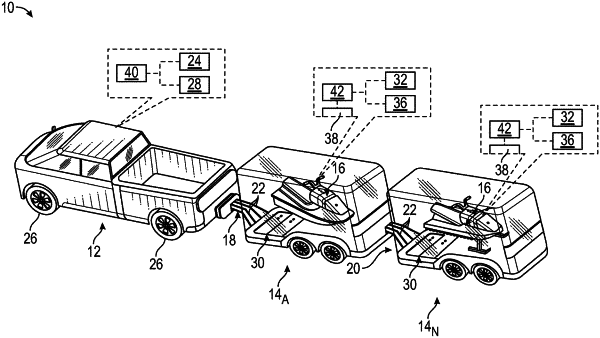| CPC H02J 7/007188 (2020.01) [B60L 50/60 (2019.02); B60L 53/305 (2019.02); B60L 53/66 (2019.02); B60L 53/67 (2019.02); H02J 7/00032 (2020.01); H02J 2310/48 (2020.01)] | 20 Claims |

|
1. A bidirectional energy transfer system, comprising:
an electrified vehicle;
a charging trailer operably coupled to the electrified vehicle; and
a control module programmed to execute an energy transfer prioritization control strategy for controlling a transfer of energy between the electrified vehicle and the charging trailer during an energy transfer event,
wherein the energy transfer prioritization control strategy is derived based on a charge priority selection that is manually input by a user of the system.
|